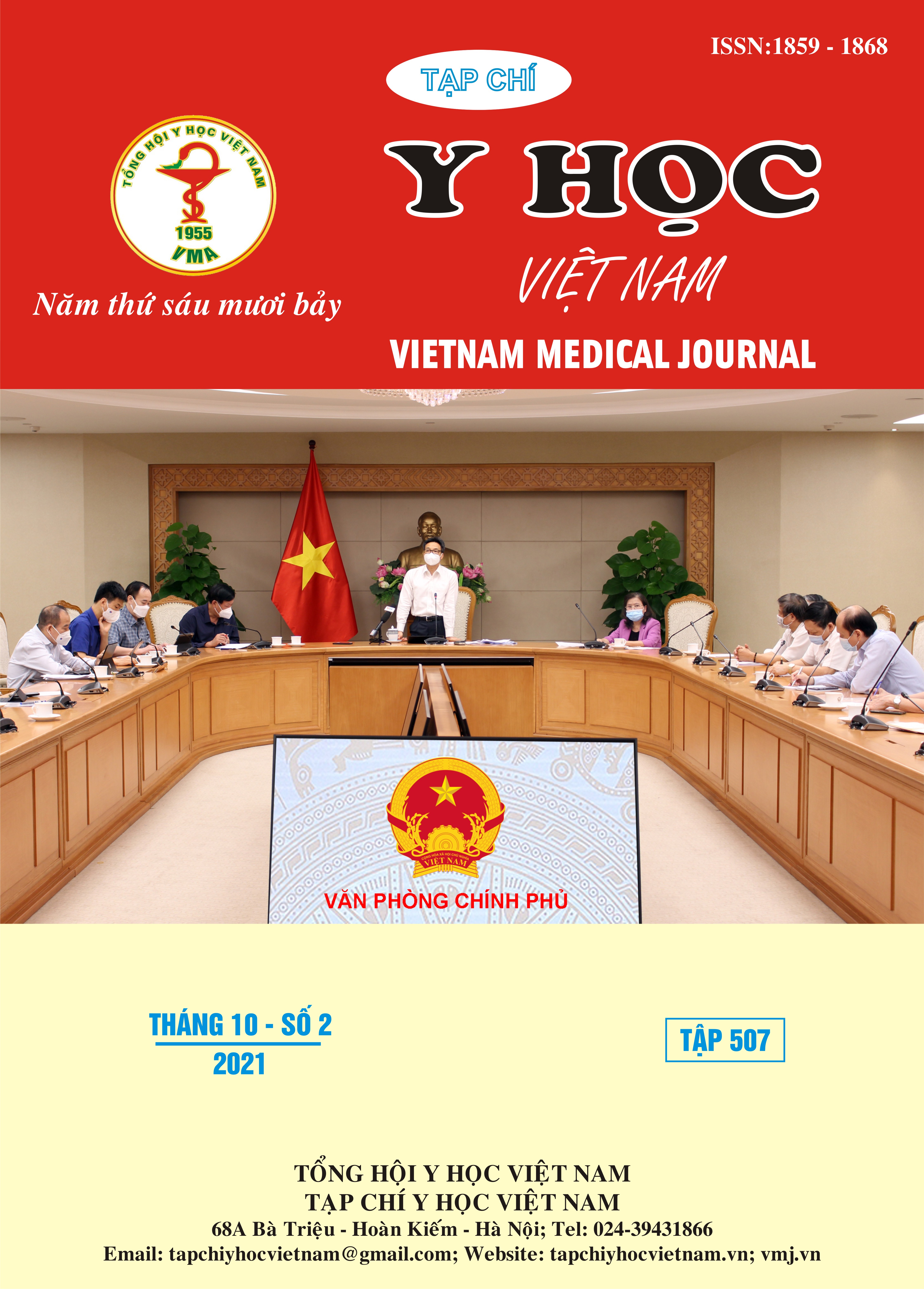THE CHARACTERISTICS OF OBSTRUCTIVE SLEEP APNEA SYNDROME IN PATIENTS AGED
Main Article Content
Abstract
Objective: To determine the physical exam and diagnostic testing in patients who suffer from obstructive sleep apnea syndrome aged over 65 years old in Bach mai Hospital. Methods: Forty-five patients who suffer from obstructive sleep apnea syndrome aged more than 65 years old agreed to participate in our study and performed polysomnography, from 9/2020 to 7/2021. Results. The most common nocturnal symptom is loud snoring when sleeping, reach to 92.5%, and waking up many times during the night, reach to 75%. 97.6% of patients had Mallampati grade 3-4 (n=42) with an average apnea index of both sexes of 32.63 (n=45). Of which 73.3% of patients have moderate to severe AHI. Patients with obstructive sleep apnea syndrome have Epworth score > 10 and morning headache symptoms only accounted for 20% (n=40). Conclusion: Subjects over 65 years of age with OSA presented with daytime drowsiness, headache, and low morning irritability. Snoring is the most common nocturnal symptom in patients over 65 years of age with obstructive sleep apnea with moderate to severe AHI.
Article Details
Keywords
Obstructive sleep apnea syndrome, polysomnography
References
2. Young T, Peppard PE, Barnet JH, et al (2013). Increased prevalence of sleep-disordered breathing in adults. American Journal of Epidemiology, 177(9):1006-1014.
3. Palta M, Young T, Dempsey J, et al (2009). Burden of sleep apnea: rationale, design, and major findings of the Wisconsin Sleep Cohort study", Wisconsin Medical Journal. 108(5):246-249.
4. George CF (2007). Sleep apnea, alertness, and motor vehicle crashes. American Journal of Respiratory and Critical Care Medicine. 176(10):954-956.
5. Yaffe K, Laffan AM, Harrison S, et al (2011). Sleep-disordered breathing, hypoxia, and risk of mild cognitive impairment and dementia in older women. The Journal of the American Medical Association. 306(6): 613-619.
6. Strohl K, Bonnie R, Findley L, et al (1994). Sleep apnea, sleepiness and driving risk. American Journal of Respiratory and Critical Care Medicine. 150:1463-1473.
7. American Academy of Sleep Medicine (2014). International Classification of Sleep Disorders 3rd edition, American Academy of Sleep Medicine, United States of America.
8. Phạm Văn Lưu (2018). Nghiên cứu đặc điểm lâm sàng, cận lâm sàng và kết quả đo đa kí giấc ngủ của bệnh nhân ngừng thở khi ngủ, Luận văn Thạc sĩ Y học, Trường Đại học Y Hà Nội.
9. Singareddy R, Vgontzas AN, Fernandez MJ, et al (2012). Risk factors for incident chronic insomnia: a general population prospective study. Sleep Med. 13:346-353.
10. Vgontzas AN, Lin HM, Papaliaga M, et al (2008). Short sleep duration and obesity: the role of emotional stress and sleep disturbances. Int J Obes (Lond). 32(5):801-809.


